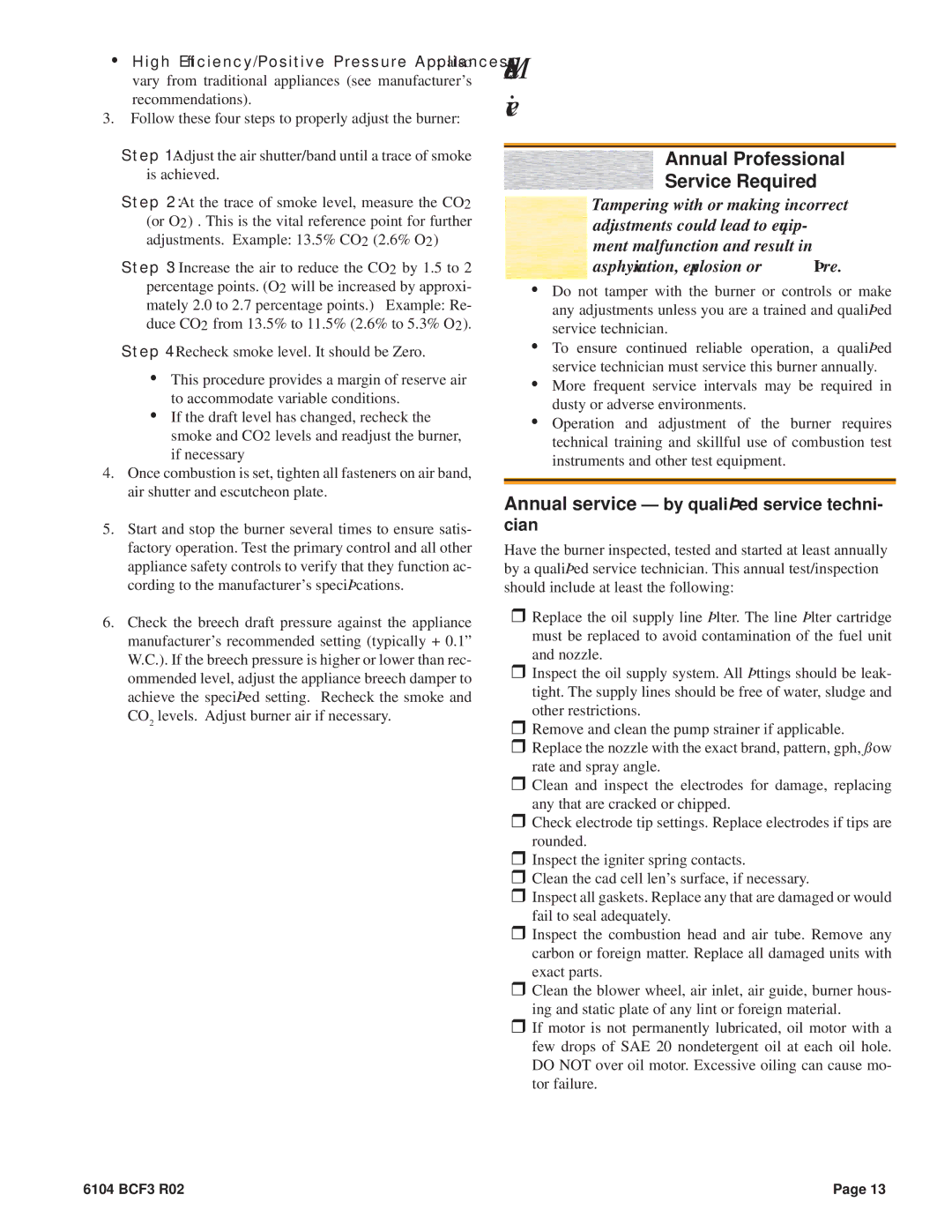CF375 specifications
The Beckett CF series, encompassing models CF3500A, CF2500A, CF2300A, CF800, and CF375, represents a robust lineup of oil burners designed for residential and commercial heating applications. These models are engineered for efficiency, reliability, and ease of use, making them a preferred choice among HVAC professionals and homeowners alike.The CF3500A is a high-capacity model that excels in providing consistent heating for larger spaces. With a firing rate of up to 3.5 gallons per hour, it is equipped with advanced nozzle technology that improves fuel atomization, resulting in better combustion efficiency. This model features a compact design, making it easy to install in various settings, and it includes an integrated control module for straightforward operation.
The CF2500A offers impressive performance with a moderate firing rate suitable for mid-sized buildings. It incorporates Beckett's patented Clean Cut design which minimizes smoke and reduces emissions. This model also comes with a diagnostic LED display, allowing for quick identification of system status and potential issues, enhancing maintenance efficiency.
The CF2300A is tailored for smaller applications while still maintaining a strong performance profile. Its compact size does not compromise power, as it utilizes advanced combustion technologies to ensure effective heating. The user-friendly interface allows for effortless adjustments, and its low profile design fits into tight spaces, making it ideal for residential use.
For applications requiring versatility, the CF800 stands out with a multi-fuel capability, allowing it to run on both oil and biodiesel. It boasts an energy-efficient design that contributes to cost savings over time. The CF800's unique air delivery system enhances combustion efficiency, reducing noise levels and improving overall comfort in the living environment.
Finally, the CF375 is designed for high-efficiency performance in professional settings. Its durable construction ensures long-lasting service, and it is equipped with advanced control systems that optimize fuel delivery and combustion. This model is particularly noted for its low emissions, aligning with modern environmental standards while providing reliable heating.
Together, the Beckett CF series exemplifies cutting-edge technology and engineering excellence, catering to diverse heating needs. Each model is a testament to Beckett’s commitment to energy efficiency, performance, and environmental responsibility, making them suitable choices for both residential and commercial heating applications.

